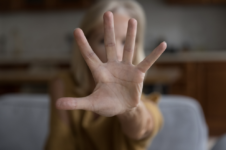The Evolution of Responses to Domestic Violence in Modern Society

The term domestic violence commonly refers to abuse by one spouse, or de-facto or intimate partner, against another, but also encompasses such conduct against a person’s child, parent, grandparent or sibling.
Historically, such violence has been characterised by verbal, physical and/or sexual abuse, acts such as genital mutiliation which, although culturally acceptable to particular communities, nevertheless result in both physical and psychological damage, and severe power imbalances through systematic suppression and domination often signified by physical, emotional and financial control, which is commonly referred to as ‘coercive control’.
Such conduct may also be referred to as ‘family violence’ or ‘domestic abuse’.
Despite moves across the globe to criminalise domestic violence, such conduct does not amount to a discrete criminal offence, or is at least tolerated, in many nations to this very day.
Countries without laws against domestic violence include many African and Middle Eastern nations, as well as Estonia in Northern Europe, and it is rarely prosecuted in many other countries including some parts of the Asian subcontinent and Central Asia.
Sadly, even a handful of developed nations including Russia – a country where domestic abuse is rife – have recently taken ‘backward steps’ after their initial moves towards criminalising domestic violence, with the Putin government giving authorities broad discretion to issue warnings to offenders and referring them for education sessions rather that prosecuting them.
But this is just a thumbnail sketch of the general positions of nation-states in what is a global issue, one with a history stretching back hundreds of thousands of years.
Caveman mythology
Many in society may well recall movies and stories of ‘Prehistoric Humans’ depicting the male clubbing, then dragging his wife, or partner by the hair to the cave, for one can only surmise what.
Many artworks and artifacts, including jokes, appear to attest to the veracity of this very first form of ‘Domestic Violence’ in ‘Prehistoric Humans’.
Whilst proof of domestic violence may not be evident as such, violence itself, is certainly indicated by archeologists; as discussed by the United Nations Educational Scientific and Cultural Organization (UNESCO), on the first traces of violence 780,000 years ago.
Archaeological studies from bones found in the Spanish Sierra De Atapuerca mountains in Northern Spain, suggested this early discovery of violence involved ‘cannibalism’; however, it is not necessarily as macabre as it sounds.
It is thought that this involved ‘Funerary Endocannibalism’, which consists of eating a member of one’s own family, even a wife, or husband, after they had died; by way of ritual and dietary tradition.
This, interestingly, is practiced today, in numerous cultures. The Wari community of the Amazon Basin in Northern South America and the Yanomami Tribe in South America were two such cultures; who regarded it as ‘respectful, non-violent and commonplace’.
Indeed, the Wari actually roasted the body as a form of the utmost respect; though, it is reported that this particular indigenous society no longer practice cannibalism.
Darwin’s theory of evolution
Equally, much speculation about early humans being based on today’s apes, in terms of domestic violence, is scientifically thought to be inaccurate; though ape behaviour, which varies significantly between aggression and compassion, may well be argued in some circles, as being similar to that of modern humans.
World Health Organisation (WHO)
Though WHO initiate many progressive aspects to combat ‘Domestic Violence’, its suggestion that lower levels of educational standards are a risk factor for sexual violence, is argued in some professional quarters, to be inaccurate.
All socio-economic backgrounds commit domestic violence.
English Common Law
Dating back to the 16th Century, domestic violence was regarded, simply, as ‘violence against the community’ and ‘wife beating’ was but simply a ‘breach of the peace’.
Indeed, up until the early 1800’s, most ‘legal systems’ accepted wife beating as part of the ‘entitlement of a husband’s rights’
It was the ‘Women’s Liberation Movement’ of the late 60’s which brought the term ‘domestic violence’ to the attention of the civilised world.
The beginning of true legal protections against domestic violence
Whilst, domestic violence fell under the term of ‘Civil Unrest’ as an offence in the UK, it wasn’t until a ‘Member of the House of Lords’ Baron Ashley of Stoke, a Labour Member of Parliament, in a speech to the British Parliament in 1973, that things changed.
Baron Ashley, also responsible for advocating against pharmaceutical companies, regarding the drug thalidomide and nuclear testing, pulled no punches in accusing, predominantly men, in relation to ‘Battered Wives’; as psychopaths, alcoholics and sadists, who must be given psychiatric treatment, to protect their partners.
Indeed, ‘Battered Wives Syndrome’ ultimately became a defence for those who murdered their husbands.
CEMACH and the generational tragedy of child abuse in the womb
The ‘Confidential Enquiry into Maternal and Child Health’, amongst numerous global studies over the past several decades, highlight not only the need to protect the lives of mother and child.
It also highlights the educationally reduced learning ability of ‘Brain-Damaged’ children, caused by beatings whilst in the womb.
Irony of police having the highest rates of domestic violence
Some studies suggest that in certain countries up to 40% of families of police members experience incidents of domestic violence. In fact, the rate of domestic violence offending if often higher amongst policing organisations than any other field of work.
And while some psychological studies partially attribute this to the stress associated with policing, many feel such a finding is just a ‘cop out’; that it’s more to do with the types of people attracted to these positions of power, as well as the fact many get used to wielding this power, often unlawfully and with impunity, during their time in the job, and bringing this attitude and conduct home with them.
Indeed, many industries and professions are highly stressful without exhibiting similarly high rates of domestic violence offending, and the fact police are sworn to uphold and enforce the law makes the breach of trust even more serious.
Sadly, police officers in Australia routinely keep their jobs despite being convicted of domestic violence offences, and police have regularly been accused of inaction when it comes to investigating and prosecuting these crimes.
But high domestic violence offending rates aren’t only found among police; global studies suggest that security guards, health professionals and care workers also commit these offences far more often than members of the general community.
Australia’s commitment to combating domestic violence
The National Domestic Violence Order Scheme Act 2016 ensured that all ‘Domestic Violence Intervention Orders’ and similar Orders, irrespective of which Australian State, or Territory issued them; are enforceable in every Court in Australia.
This also meant any ‘Domestic, Family, or Personal Orders’ issued prior to the Act being given ‘Royal Assent’, could be varied in Courts in any State, or Territory; by virtue of the Court declaring it ‘Nationally Recognized’, thereby ensuring safety for the holder and/or their family.
In May of 2015, SCL Principal, Mr Ugur Nedim, was the author of an article, titled ‘Will the National Domestic Violence Scheme be Effective’; pointing out the pros and cons of the proposed legislation by the Council of Australian Governments
Since the Act received ‘Royal Assent’ and ultimately implemented as the ‘National Domestic Violence Order Scheme Act 2016’, it has received some positive overtures.
Though, the majority of the States ponder over the fact that it may have been somewhat easier to navigate, if all of the States had uniformity of their individual, unique ‘Domestic & Family Laws’.
The NSW Bureau of Crime Statistics and Research (BOCSAR)
NSW Police statistics between 2016 and 2020, which have been checked by BOCSAR, appear to paint a less positive picture; attributable to the success of the new National Domestic Violence Order Scheme Act.
Citing an ‘upward trend’ in a variety of offences under the new legislation, Bocsar assessed these statistics up to 2021.
- 69.4% of domestic violence victims were female.
- From 2017, implementation of the new legislation, until 2022, domestic violence assaults rose by 3.2%.
New South Wales
Published in May, 2018, the NSW Government’s Department of Premier and Cabinet, indicated that in addition to have shown to have helped people, ‘The NSW Domestic Violence Disclosure Scheme’ is set to be extended for another year’s trial.
The Minister responsible for Prevention of Domestic Violence and Sexual Assault, Prue Goward, stated that “the scheme has empowered many people to make an informed decision, which could save their lives.”
Police Minister, Troy Grant, was somewhat more cautious, in terms of encouraging the public to be more vigilant.
Australian surveys
An online survey of 15,000 women was conducted by the Australian Institute of Criminology (AIC) the issue of domestic violence in the early stages of Covid-19.
The report found that the three months prior to the survey, conducted in May 2020, 4.6 percent of female respondents experienced physical or sexual violence from a current or former cohabiting partner, 5.8% experienced coercive control and 11.6 percent suffered at least one form of emotionally abusive, harassing or controlling conduct.
The Covid-19 pandemic saw an increase in those already suffering domestic violence, but also saw the onset of physical and sexual violence in those not previously suffering.
Australian Bureau of Statistics (ABS) Safety Survey
This survey, conduct between 2016 and 2020, found that 1 in 6 women (17%, or 1.5 million) and 1 in 16 men (6.1%, or 500,000) suffered physical and sexual violence.
Significantly, the ‘Recorded Crime Victims’ results from 2020, released in June 2021, found that “family and domestic violence related sexual assault increased 13% from 2019”.
Australia’s National Research Organisation for Women’s Safety (ANROWS)
Established by the Commonwealth, and State & Territory Governments, ANROWS was integrally involved in the August 2022 Report released by the Australian Institute of Health and Welfare, on Family, Domestic and Sexual Violence.
ANROWS’ Charter is to, essentially, seek evidence to enable Australian & Territory Governments to implement policy; to ensure Australia’s women and children are as protected as possible.
However, it is clear that society still has much work ahead of it, to look after our most vulnerable people.
Covid-19 is not the only pandemic
An interesting comment may be that of the United Nations, which suggested in an article in 2020, that Domestic Violence, involving Family and Personal Violence, was the ‘Shadow Pandemic’; adding that the ‘Abusers work from home’.
Many studies and pieces of research have corroborated this characterisation.
Original owners of our land
Partly, though not wholly, as a result of the trauma associated with our intergenerational Indigenous citizens, the incidence of Domestic Violence for Indigenous Australians, exceeds that of non-Indigenous Australians.
Whilst an earlier AIHW Report was released in 2018, many of the findings relate in a ‘Data Release’ in December 2021 and could be described as a ‘National Disgrace’.
The combined statistics showed that:
- Homicides of Indigenous Australians was twice that of the rest of society.
- Hospitalisation of Indigenous Women, exceeded that of non-Indigenous females, by a horrific 32 times.
- The multiples of Hospitalisation for Indigenous men was 23 times that of non-Indigenous.
- Indigenous children were 7 time more likely to suffer abuse.
- The Indigenous hospitalised as a result of family and domestic violence, were 1.3 times likely to die; and due to the violence, more likely to die as a result.
- 70% of those hospitalised were women.
New Child Removal Protections
An article published in the Guardian newspaper on 10 November 2022 reported that the Government intends to introduce legislation aimed at ensuring that no child is removed from their parents; without an absolute necessity to protect the safety of that child.
Professor Megan Davis, from the ‘Cobble Cobble’ First Nations community, a respected ‘Constitutional Lawyer’, published her ‘Family is Culture findings approximately 3 years ago and the new Government has now acted.
Families & Communities Minister Natasha Maclaren Jones, is committed to expediting addressing this catastrophic, unregulated practice; where even new-born babies were removed from their families.
Make no mistake about it, we’re talking about Indigenous children, predominantly.
Whilst Professor Davis’ findings have not been fully adopted, the Minister has made provisions for a review in a year’s time, of those recommendations which have not yet been acted upon.
Child abuse on the rise
Lawyer and Chief Executive of Djirra, an Aboriginal Legal & Family Violence Prevention Service, warned of child abuse rising during ‘Covid lockdowns’; and despite it falling for a month in 2020, the figures rose again thereafter.
In New South Wales, the use of ‘permanent care Orders’ was twice the national average, with in excess of $2 billion spent on child protection whilst only $150 million is spent on early intervention, according to the Aboriginal Child, Family and Community Care Secretariat Committee. (AbSec)
The world, as most Australians say, ‘Australia is the lucky country’. Not for the traditional owners of this land, it’s not!






